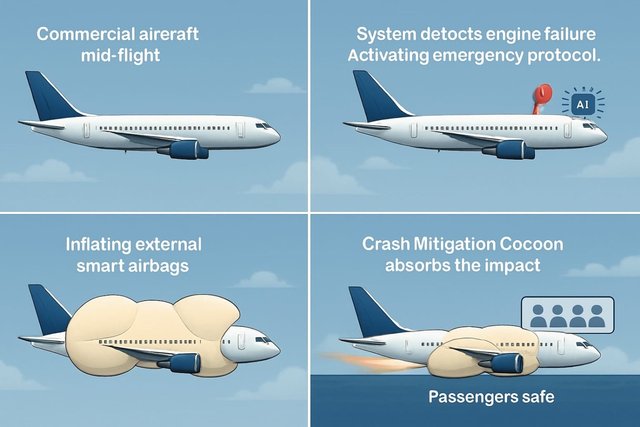An airbag for airplanes
An airbag for airplanes


And if a falling plane could literally inflate a giant bubble, a kind of airbag to protect everyone on board, that is the bold proposal of the Rebirth project, developed by engineers at Beat Pilani's Dubai campus and already a finalist for the 2025 James Dyson Prize.


The system activates reverse thrust to decelerate the aircraft, otherwise it releases gas propellants to try to reduce the impact speed. After the forced landing, a suite of rescue measures comes into action, fluorescent orange paint, flashing lights, infrared flares and integrated GPS, all to guide the teams to the scene quickly.
